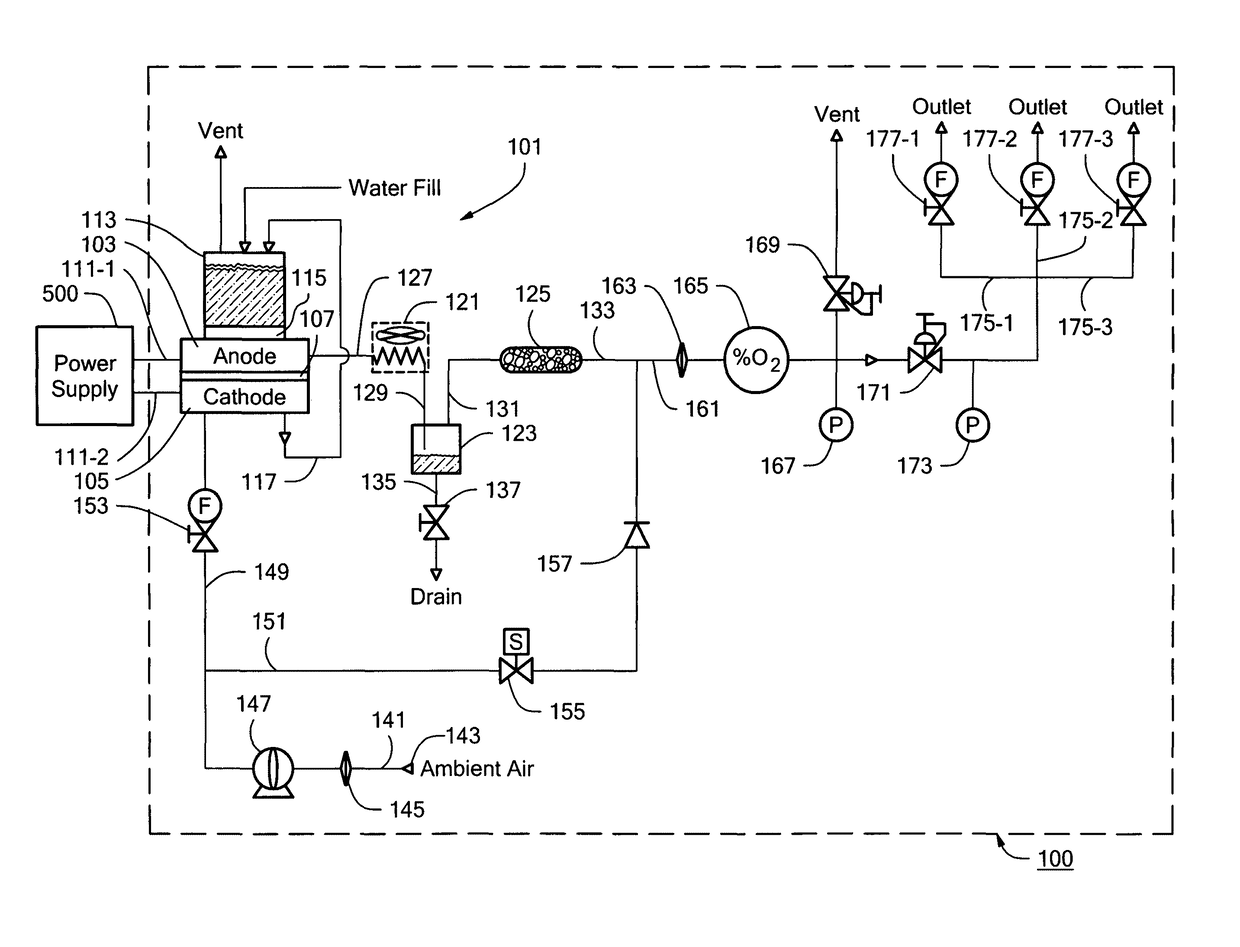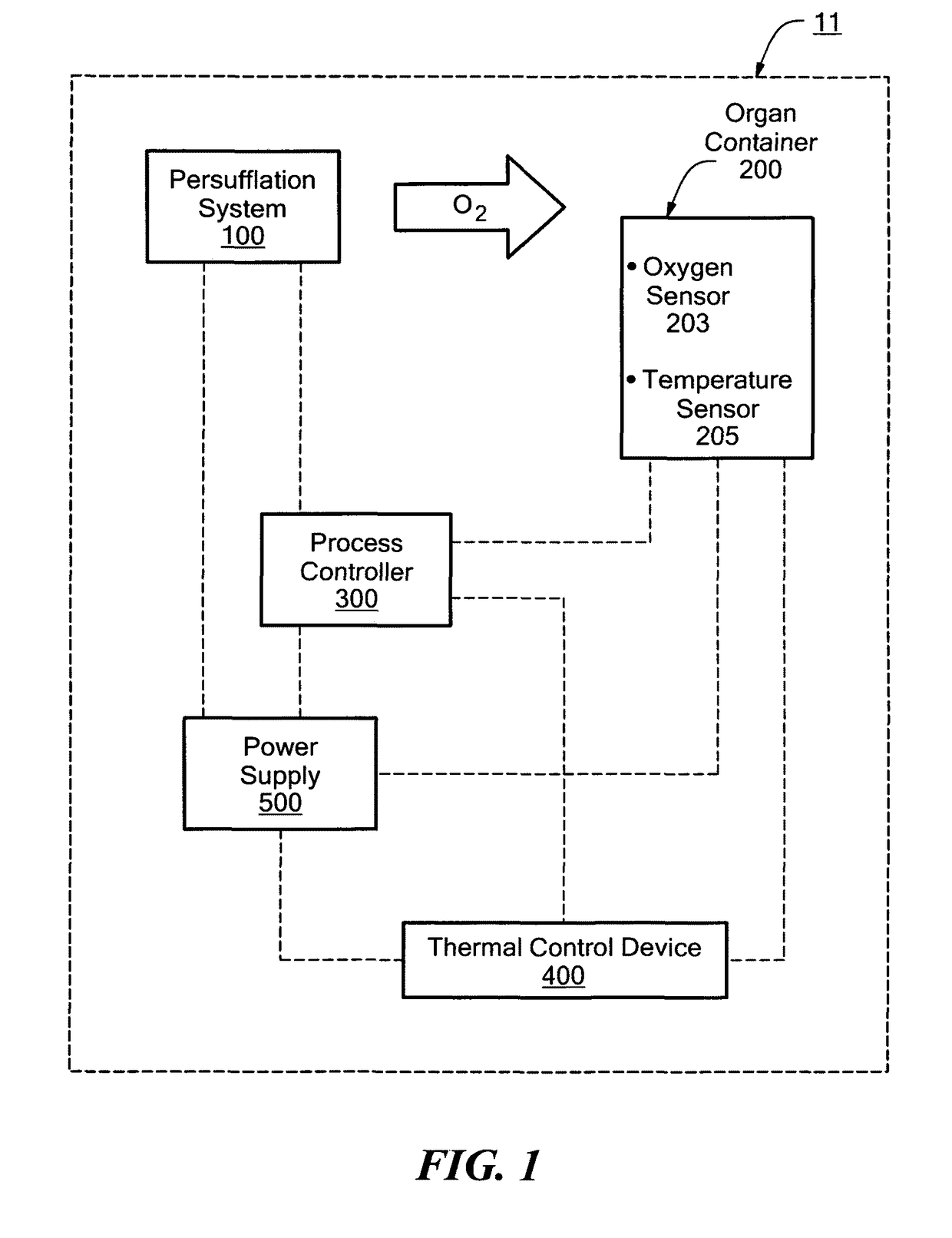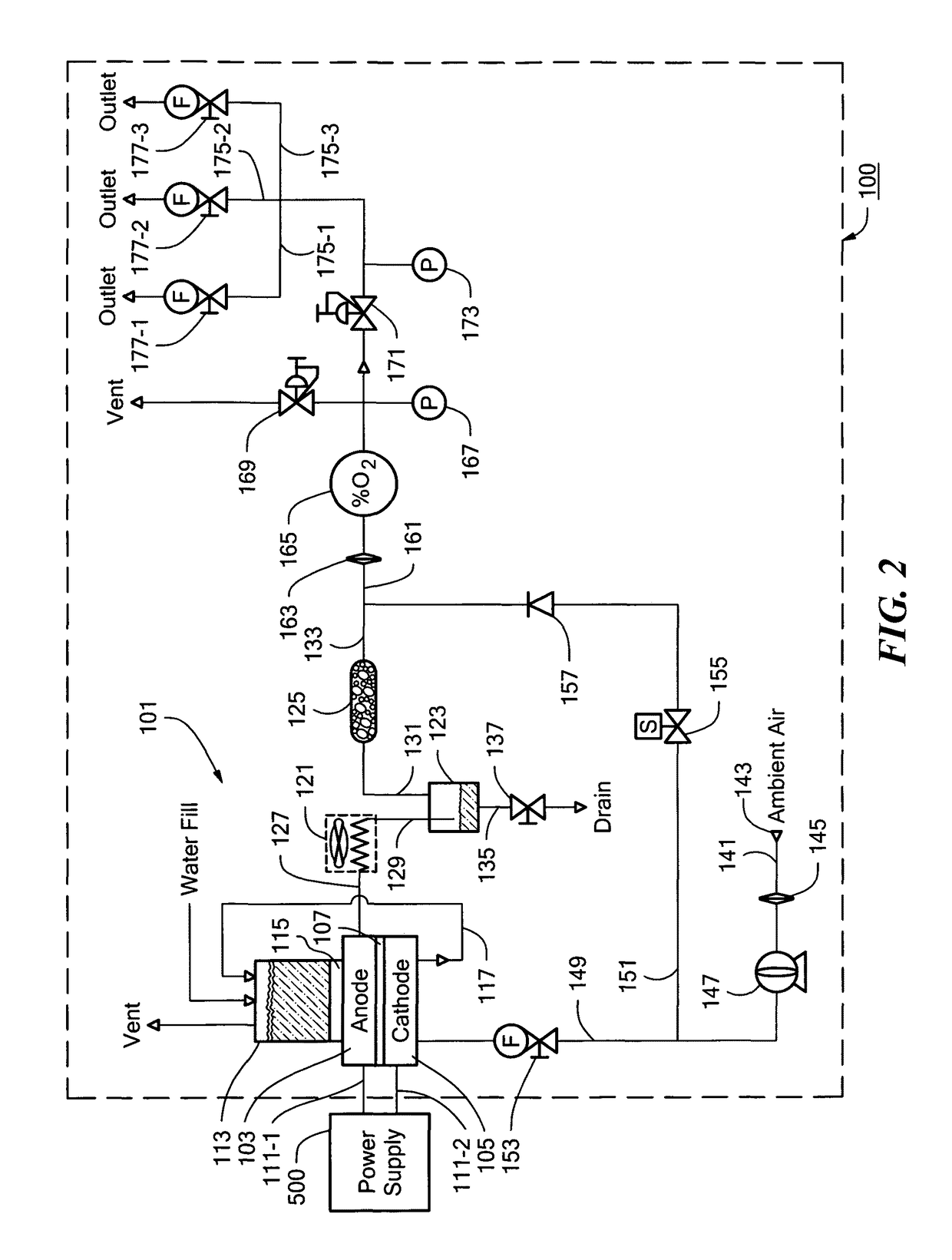Perfusing an organ with an in situ generated gas
a technology of in situ generation and organs, applied in the field of organ preservation, can solve the problems of limiting the number of transplants possible, affecting the widespread implementation of this therapy, and requiring quality donor organs
- Summary
- Abstract
- Description
- Claims
- Application Information
AI Technical Summary
Problems solved by technology
Method used
Image
Examples
example 1
Demonstration of Improved Islet Persufflation Oxygenation Method with Electrochemical Oxygen Generation
[0065]The impact of persufflation on islet isolation was tested in five (5) organs by dividing each organ into its 3 lobes, taking the duodenal lobe for immediate isolation, preserving the splenic lobe for 6 hours with persufflation, and preserving the connecting lobe for 6 hours with TLM. In one experiment, preservation was extended to 24 hours. The persufflation system utilized an EOC having an active catalyzed area of 40-cm2 and employing NAFION® NRE-112 membrane as separator 107 and water pervaporation membrane 115. Anode 103 and cathode 105 comprised sprayed ink decals applied to separator 107 having 4 mg / cm2 loading of platinum-iridium black catalyst and platinum black catalyst, respectively. With deionized water provided to the EOC reservoir and air provided to cathode at 300 ccm, both at 21° C., the performance of this EOC was 0.84 volts at 8 amperes (200 mA / cm2) and 0.93 v...
example 2
Additional Persufflation Experiments Using an Electrochemical Oxygen Concentrator (EOC) with Porcine and Human Pancreata
[0079]These experiments included islet isolations and compared outcomes from unpreserved lobes (control) to those from lobes preserved for 24 hours with the Two Layer Method (TLM) or by persufflation. Consequently, the number of porcine pancreata used for isolation was seven, four of which were used for assessment of preservation at 6 hours and three of which were used for assessment of preservation at 24 hours. In addition to the experiments conducted with porcine pancreata, we have been able to obtain a human research-grade pancreas, which was utilized for testing the persufflation technique. Some key findings are as follows: (1) 24-hr preservation with persufflation using electrochemically generated oxygen results in superior outcomes when compared to 24-hr storage on TLM (see FIGS. 9 and 10); (2) Persufflation of the human pancreas is feasible and surgically le...
PUM
 Login to View More
Login to View More Abstract
Description
Claims
Application Information
 Login to View More
Login to View More - R&D Engineer
- R&D Manager
- IP Professional
- Industry Leading Data Capabilities
- Powerful AI technology
- Patent DNA Extraction
Browse by: Latest US Patents, China's latest patents, Technical Efficacy Thesaurus, Application Domain, Technology Topic, Popular Technical Reports.
© 2024 PatSnap. All rights reserved.Legal|Privacy policy|Modern Slavery Act Transparency Statement|Sitemap|About US| Contact US: help@patsnap.com










